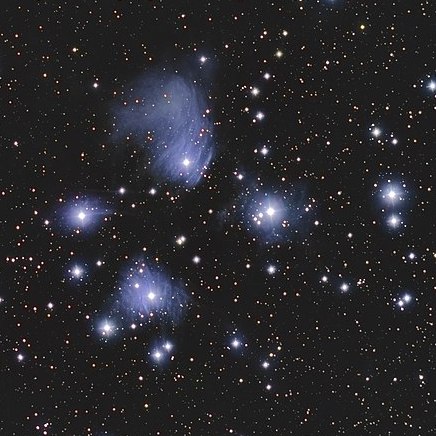Celebrate the Stars: Understanding Matariki and Its Significance
Hey there, awesome parents! Are you ready to dive into the shimmering world of Matariki with your little ones? As a symbol of new beginnings, Matariki is an incredible opportunity to teach kids about astronomy, Maori culture, and the importance of family and community. Let’s explore together what Matariki is all about, and why it holds such a special place in the hearts of many New Zealanders.
What Exactly is Matariki?
Matariki, known also as the M?ori New Year, is a star cluster that appears in the early morning sky in New Zealand during the mid-winter months. This celestial event is not only a beautiful natural phenomenon but it also holds great cultural significance for the M?ori people. Curious to learn more? Fantastic! Let’s unwrap the layers of this astronomical wonder.
The Astronomy Behind Matariki
First things first—Matariki is a cluster of stars also known globally as Pleiades or the Seven Sisters. While you might be able to spot up to nine stars with the naked eye on a clear night, traditional M?ori astronomy identifies seven stars that are central to the celebration of Matariki. These stars have been used for navigation and as indicators of the upcoming seasons for many generations.
The Cultural Importance of Matariki
But Matariki isn’t just a group of twinkling lights in the sky. It’s deeply woven into the fabric of M?ori culture. This period marks the start of a new year, and it’s a time for remembering those who have passed, celebrating the present, and planning for the future. It’s about wh?nau (family), community, and connecting with the environment.
How Matariki is Celebrated
Now that we’ve got the basics, let’s see how this starry spectacle is celebrated! Matariki festivities are rich with tradition and are a fun way for families to engage with and learn about M?ori heritage. Here are some ways Matariki is honored:
- Shared Feasts: Gathering around the table for a feast is a common practice during Matariki. It’s a time of hospitality and coming together with loved ones to share in the bounty of the past year.
- Kite Flying: Tradition holds that flying kites symbolizes connecting with the heavens. This activity is not only fun for kids but adds a visually striking element to the celebration with vibrantly colored kites soaring high.
- Cultural Performances: Music, dance, and storytelling are essential aspects of Matariki observances. These performances provide a captivating way to pass down stories and traditions.
- Planting Crops: Matariki is a time to look after the land and prepare it for the next year’s harvest. Planting during Matariki serves as a lesson in sustainability and care for the environment.
Remember, participating in Matariki celebrations is not only educational but can also be incredibly fun and rewarding for the whole family! It’s a time to pause, reflect, and enjoy the world around you.
Tips for Introducing Your Kids to Matariki
Now that you’re equipped with some knowledge about Matariki, you might be wondering how to introduce this celebration to your kids in an engaging way. Fear not! Whether you’re crafting star-themed decorations or cooking a traditional M?ori meal, there are plenty of ways to get your kids involved and excited about Matariki. Encourage their natural curiosity, and who knows? They might just teach you a thing or two!
Read on as we delve even deeper into Matariki’s traditions and how to celebrate with mindfulness and joy. It’s time to make some stellar memories!

Embracing Matariki: A Guide for Families to Celebrate the Maori New Year
Hello fabulous families! As Matariki draws near, it’s a perfect opportunity to gather your little stars and embark on a sparkling adventure into the world of the Maori New Year. Matariki is all about community, culture, and connecting with the majestic night sky. Join me as we navigate through the ins and outs of Matariki and discover the essence of this significant event in New Zealand’s cultural tapestry.
Decoding Matariki: The Maori New Year Explained
Matariki is the Maori name given to a cluster of stars also known internationally as the Pleiades. This group of stars rises in mid-winter and the sighting of Matariki marks the beginning of the Maori New Year. This is a time for honoring the past, celebrating the present, and looking ahead to the future—a truly remarkable period of reflection and festivity, deeply rooted in Maori traditions.
Astronomy of Matariki: A Celestial Phenomenon
Let’s dive into the cosmic side of Matariki. The cluster, traditionally recognized for containing seven stars, has been a guide for navigation and seasonal forecasting across the generations. These twinkling beacons encourage us to look skyward and ponder the vastness of the universe. Isn’t it just incredible?
Cultural Tapestry: The Heart of Matariki
Matariki isn’t merely a collection of stars; it’s a cornerstone in Maori heritage. This era is reserved for homage, celebration, and anticipation. It’s an occasion that underscores the significance of wh?nau (family), togetherness, and stewardship of nature. Quite a transcendent concept, right?
Celebrating Matariki: Traditions and Modern Twists
Aware of Matariki’s foundations, let’s spotlight how families across New Zealand celebrate this luminous occasion. With a rich heritage of customs, Matariki brings forth a blend of history and creativity in its celebration.
- Culinary Delights: Family gatherings with delicious feasts signify the richness of Matariki. It’s a chance to exhibit hospitality and cherish the company of family and friends, rejoicing in the year’s harvest.
- Soaring Kites: Kite flying represents a connection to the spirits above. Not only an exhilarating activity for children, but it also adds a kaleidoscope of color to Matariki with kites dancing in the winter breeze.
- Expressive Arts: Cultural performances are the pulse of Matariki, bringing music and tales alive, thereby ensuring the legacy of tradition continues vibrant and resonant.
- Harvest Preparations: Matariki is a period of nurturing the earth, prepping for the future’s yields. It’s a great teaching moment for sustainability and environmental guardianship. How awe-inspiring!
Above all, taking part in Matariki celebrations can be a delightful and enlightening experience for your clan. It’s a pause in our bustling lives to appreciate the natural and cultural world we’re a part of.
Five Things Parents Should Know for Matariki
Here we go, parents! As you gear up for Matariki, here’s a list of five essential insights to make the celebration an unforgettable and enriching encounter for your wh?nau:
- Know the Dates: Matariki doesn’t have a set date like the Gregorian New Year; it changes each year based on the lunar calendar. It’s critical to pinpoint when Matariki will be observed.
- Stargaze as a Family: To fully grasp the essence of Matariki, engage in stargazing. This can spark interest in astronomy and provide a moment of togetherness in the quiet of the night.
- Learn the Legends: Matariki is steeped in myth; familiarize your family with the stories. This will foster a deeper connection with the stars and Maori folklore.
- Get Creative: Encourage your children to craft star-shaped decorations or partake in kite-making workshops. Creativity merges joy and learning seamlessly.
- Embrace the Community: Matariki celebrations are widespread; join local events to immerse yourselves in the warmth of your community.
With these insights in your celestial navigation kit, you’re set to make Matariki a memorable season!
Let’s delve deeper into crafting an unforgettable Matariki celebration filled with joy, learning, and stars. Gather your loved ones and get ready to create memories that will twinkle for a lifetime!
See more great Things to Do with Kids in New Zealand here. For more information see here
Disclaimer
The articles available via our website provide general information only and we strongly urge readers to exercise caution and conduct their own thorough research and fact-checking. The information presented should not be taken as absolute truth, and, to the maximum extent permitted by law, we will not be held liable for any inaccuracies or errors in the content. It is essential for individuals to independently verify and validate the information before making any decisions or taking any actions based on the articles.




